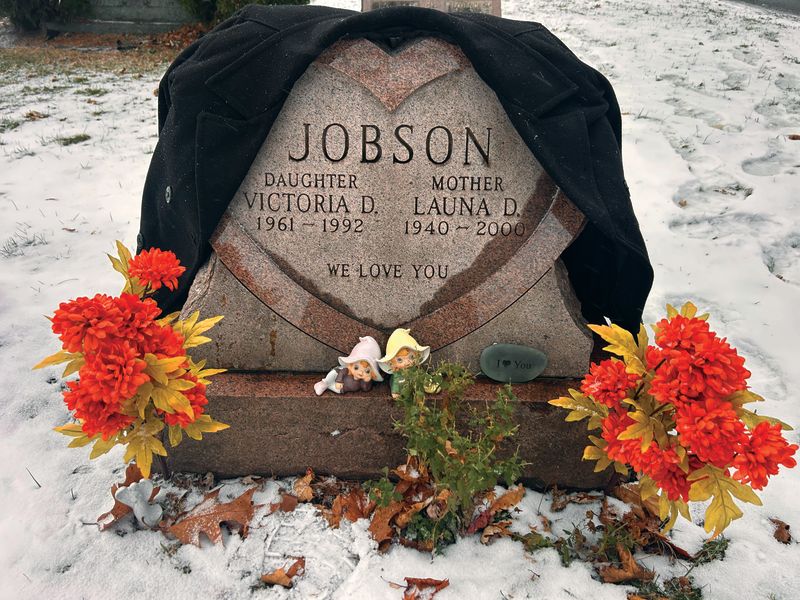
In the early morning hours of Monday, December 7, 1992, among strewn garbage and remnants of homeless encampments, Victoria Jobson’s nude body was found. Stabbed to death thirty-six times, she was discarded callously in a vacant lot behind an abandoned warehouse next to the train tracks off Rutter Street. It was clear to authorities this was not the site of her murder; she had been killed elsewhere. Based on the state of decomposition and the film of dirt that covered her body, investigators theorized she had either been buried or stored in a basement since her disappearance in October.
The chaos of what was brewing in Rochester made it a hotbed for the raging overwhelm of substance dependence, violence, poverty, and homelessness. Women were being plucked from the streets, passersby happening upon their brutalized corpses. The siren song of the neighborhood did little to dissuade Jobson, though. Three active serial killers were terrorizing the dim streets in the early 1990s, each claiming vulnerable victims and disposing of them at their preferred dump sites. Nameless offenders, yet each with a unique signature. Children sat anxiously on front stoops awaiting their mothers’ return, paralyzed by fear they may not come home, like the other mothers.
Surviving the streets became progressively more dangerous. Crack cocaine had traveled up the pipeline from New York City, making its way to Rochester in the late 1980s. New York State had one of the highest instances of crack usage in the country. Cops were forced to replace their six-shooter revolvers with nine-millimeter guns holding a sixteen-round capacity to combat the increased drug-fueled street violence. The community was suffering. Even with these known threats plaguing the red-light district, desperate females still sidled into passenger seats of strangers’ sedans.


Victoria Jobson, thirty, affectionately called Vick or “Slick Vick,” was notorious for her silly and life-of-the-party disposition. She loved to dance. Jobson was a fixture of the Jones Park community, frequenting the restaurants and small shops. Walking down the streets, she would wave and say “hi” to everyone, always carry – ing a spare piece of candy for the neighborhood kids. In the months leading up to her disappearance, Jobson was living with her sort-of-pimp, sort-of-boyfriend, Tony Jackson, in a neglected red brick apartment building at the corner of Emerson Street and Lake Avenue. But it hadn’t always been that way.
Before she found herself addicted to drugs and working the streets, Jobson had a pretty good life—two happy young kids, a fourteen-year relationship with her kids’ dad, Curtis Washington, a home, and a career. Jobson grew up in a typical blue-collar Syracuse household: her mom, Launa Jobson, a nurse’s aide; dad, Emery Jobson, who worked for General Motors; and a pack of siblings—four sisters and a brother. Victoria had raven-colored hair, strikingly different from the fair-haired others, her sister Kelly Gangemi notes. Victoria had a killer voice and could do remarkable impressions of singers, especially her mom’s favorite, Elvis. But most notably, she sang a rendition of “Our Love” by Natalie Cole that still echoes in the memories of her best friend, Char King. They met when they were fifteen. Not uncommon for a couple of teen girls, they were a wild duo, she says. There was a boyfriend Launa didn’t like. They cut class. Smoked pot for the first time. Spent afternoons at Pinball Palace. And once Victoria suggested to King they take off and spend the night in an abandoned house over on the west side.
Then Jobson met Washington. He was a DJ at a club. The drinking age was eighteen, but she and King were underage and would sneak in. After that, the rest was history, according to King. They were both just nineteen when they became pregnant with their daughters, who were born just ten days apart. King recalls waddling down the street together to get pizza and donuts in the weeks before they gave birth. Their paths crossed and waned over the years, often living in different zip codes, but they remained in contact and committed to their friendship regardless.
Later in the 1980s, Jobson’s family slowly started moving to Rochester from Syracuse. Victoria followed, and brought her two kids, Keisha Washington and Kurtis Jobson. Along with her sister Cindy Jobson, she moved into a cute fixer-upper on Knickerbocker Avenue. Eventually, Washington, too, moved from Syracuse and joined them. Cindy relocated, leaving the family of four to themselves. But later, when Washington and Victoria broke up for good and he left, she could no longer keep the Knickerbocker house. Victoria was forced to find an affordable place for herself,eleven-year-old Keisha, and little Kurtis, who was just four.


Jobson was devastated and depressed. Given the surge of crack cocaine use in the area, it didn’t take long to spiral down the self-destructive path. She withdrew into a shell of her former self. Withering away, Jobson dropped to 100 pounds. Keisha and Kurtis were being neglected; Cindy stepped in and called Washington, telling him he needed to come get the kids. Jobson’s family said after that, she lost all hope and purpose. She met and moved in with Jackson, who would watch from the red brick steps as she left to take clients. Jobson soon became known to officers who patrolled the area and was arrested four times for sex work during regular sweeps of the neighborhood. She was caught in a vicious cycle of turning tricks and getting high.
Despite Jobson’s circumstances, her family regularly checked in on her. Cindy would find her once a week somewhere along Lake Avenue, and they’d go to the McDonald’s on the corner of Lexington Avenue. She would fill Victoria up with a burger combo, then send her on her way with a couple beers and a ten-dollar bill. As heartbreaking as it was to watch her be swallowed back up by the streets, it was one small thing she could do for her struggling sister. “Remember to call mom!” Cindy would say as they parted ways. But by the end of October, Launa hadn’t received her weekly call. Soon, she began driving up and down Lake Avenue in the middle of the night trying to find Victoria. Launa called all the local hospitals, the jail. She constantly wondered if Victoria was cold and needed a jacket, especially when it was raining or snowing. Often, Cindy joined her mother for the exhaustive search efforts, so she wouldn’t be alone.
Victoria’s birthday—November 12— came and went. Cindy tracked down Jackson, but he hadn’t seen her either. Jackson wasn’t a standup guy, controlling and maybe even abusive, so the family thought maybe he had something to do with her disappearance. He insisted Vick was his girl and would never harm her, and was cleared by the police. Ironically, Robert “Bruce” Spahalski, who was later identified as one of the serial offenders who began his killings in 1990, lived in the same red brick apartment building as Victoria when she went missing. Following Spahalski’s admissions in 2005, his name was floated as a possible suspect, as his murders were fueled by crack cocaine and involved sex workers. It wouldn’t be until November of 2024 when the names of Victoria’s true assailants were revealed.


But Victoria would never call home again. After her murder, Launa went downhill. The medical examiner wouldn’t allow her to identify Victoria’s body, because they felt it would be too traumatic to see the state of it. The coroner clipped a lock of her hair for Launa, a keepsake she kept on her bedside table until her untimely death in 2000. Cindy and Kelly agreed their mom died of a broken heart. She just couldn’t get over losing Vick. Gangemi couldn’t properly grieve her sister for years, not until she was able to miraculously overcome her own addiction. She wishes Victoria had found her way off drugs in time; they could have continued raising their kids together and share the joys of future grandmotherhood.
Keisha remembers being surrounded by endless love growing up. Victoria was selfless; Keishaw witnessed her mom nurse injured kittens, chipmunks, and birds back to health. She saw Victoria fiercely protect her sisters, refusing to take any nonsense from anyone; she rarely held her tongue. Victoria loved Christmas and ensured the kids received everything they asked for. Keisha makes Falls Cemetery her first stop when in town, no matter what. Faithfully, she decorates her mom’s gravesite to coordinate with the season or holiday.
An annual coat drive was established in Victoria’s honor, its inception inspired by the cold, sleepless nights Launa and Cindy spent searching. Keisha, Kelly, and Victoria’s niece, Nicole, tirelessly organize, collect donations, and run the event each December, memorializing Victoria’s anniversary. Giving back to the marginalized community, the same one Victoria became a statistic of, became the family’s mission. By doing so, they turned their tragedy into a legacy. This year, following the coat drive, Keisha wrapped her mom’s headstone in one of the jackets and adorned the fresh, white snow with crimson flowers.
Yellowed newspaper clippings piled neatly on Cindy’s coffee table are a cruel reminder of how much time had passed. Framed photos from before. A family who has lost so much to the insidious side effects of grief, addiction, and pain. What they never lost was hope. After three grueling decades of unanswered questions, two arrests were finally announced in November of 2024— Arthur Jason Jr. and a second suspect who is in custody but whose name, at press, has not been released. As the case moves through the court system, at last, justice is on the horizon. A resolution to finally bring some peace both to those gone and those who remain.
This article originally appeared in the May/June 2025 issue of (585).
Views: 228




